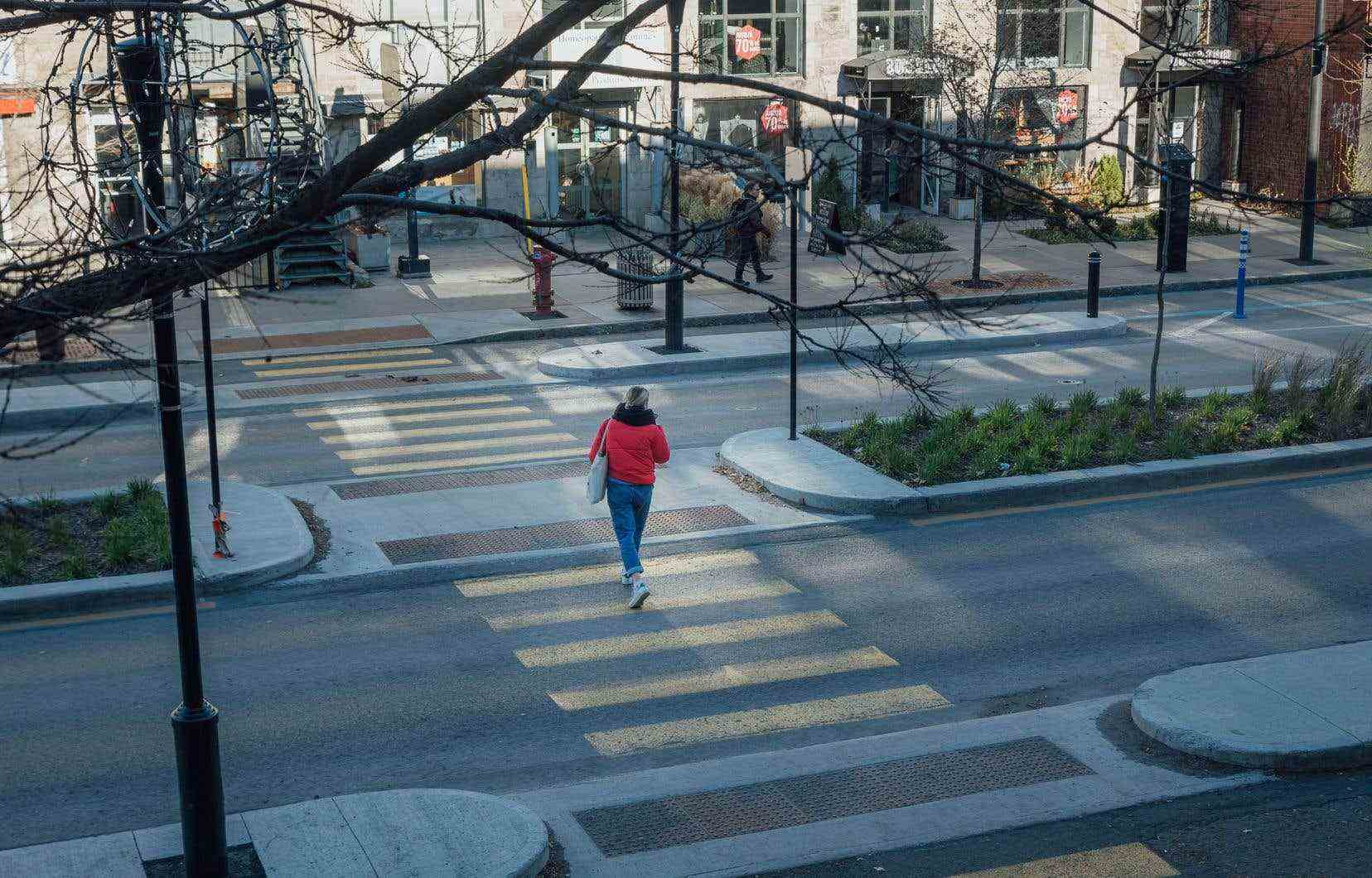Even though the effectiveness of sidewalk overhangs to secure intersections has been demonstrated many times over the past decades, the issue still divides elected officials because of the resulting withdrawal of parking spaces. Last Monday, at the Côte-des-Neiges–Notre-Dame-de-Grâce (CDN–NDG) borough council, opposition councilors voted against the development of projections, accusing the administration of Mayor Gracia Kasoki Katahwa for failing to consult with residents.
Monday evening, the day before the death of the young Maria Legenkovska, 7 years old, caught by a motorist in the Centre-Sud, the borough council of CDN-NDG had to decide on the development of projections in three intersections of the territory. Snowdon Councilor Sonny Moroz, however, spoke out against the proposed projections on Trans Island and Isabella streets. Residents are concerned about the loss of parking spaces, which could lead to more traffic and frustration in this area, he argued.
Tempers flared, however, when Mayor Katahwa explained that formal consultation was not necessary to make curb extensions that take up little parking space. “If people tell us that we shouldn’t make curb extensions because it takes up parking space, what do we do? Are we stepping back? No. […] We want to make the streets of CDN-NDG safer. The biggest consultation that has been done is the last elections. »
“When you expect perfection, you feed inertia,” she said, quoting the comments made by the mayor of Quebec, Bruno Marchand, during a COP15 activity. “If the opposition wants to continue feeding inertia, I let them. »
“We want to prioritize safety, but invoking COP15 as if curbs will save the planet, it’s ridiculous,” retorted Sonny Moroz, who believes that the mayor did not get enough votes to justify the fact. to go ahead with the project without consultation. Recall that Gracia Kasoki Katahwa had won the mayoralty of CDN–NDG with a majority of 161 votes over her opponent from Ensemble Montréal, Lionel Perez.
An outdated vision
Public health specialist, Dr.r Patrick Morency is surprised that the development of projections is still debated and that the loss of parking spaces can be mentioned to oppose such projects. “It’s a completely outdated view of the city,” he says. They have been systematically implanted for more than ten years. These are measures that have been recognized as effective since the 1960s all over the world. We don’t invent anything. The safety of people takes precedence over the fluidity of vehicles. »
Moreover, he points out, parking within five meters of intersections has been prohibited in the Highway Safety Code since the 1980s.
The Dr Morency has been interested in the issue of road improvements and urban safety for decades, but mentalities have been slow to change, he says. Twenty years ago, the authorities had to be convinced that road trauma was important, that strategies based on education or signage were not enough, but that physical arrangements were needed to modify behavior.
In 2016, he also conducted a study on the effect of calming measures such as projections and speed bumps in four Montreal boroughs: Ahuntsic-Cartierville, Le Plateau-Mont-Royal, Mercier– Hochelaga-Maisonneuve and Rosemont–La Petite-Patrie. He concluded that curb extensions reduced the number of pedestrian injuries by 23% and that speed bumps reduced pedestrian injuries by 6%.
The circumstances surrounding the death of Maria Legenkovska, at the corner of the streets of Rouen and Parthenais, Tuesday not being yet known, the Dr Morency does not know what set of measures should be put in place. However, the Centre-Sud sector, where the tragedy occurred, has been known for decades as a place where the number of road traumas is high, he says. “It is certainly linked to the fact that it is at the confluence of north-south and east-west highways. These are neighborhoods that have been invaded by car traffic for 50-60 years. It doesn’t just take measures at the intersection scale, but it takes measures at the neighborhood scale to reduce the pressure of through traffic. »
According to him, however, “giant steps” have been taken in recent years in Montreal with a systematization of calming measures in several central neighborhoods. Previously, the City intervened in less busy streets. Now, it does so on arteries like rue Saint-Denis with the Réseau express vélo (REV), he points out.
He welcomes the addition of bollards on Thursday at the corner of rue de Rouen and rue Parthenais. “Unfortunately, it is reactive to a tragedy. We would have liked it to be more proactive. »
On Friday morning, Montrealers took part in a solidarity march in memory of Maria Legenkovska. For its part, the Ombudsman de Montréal announced its intention to open an investigation into the sad event.
